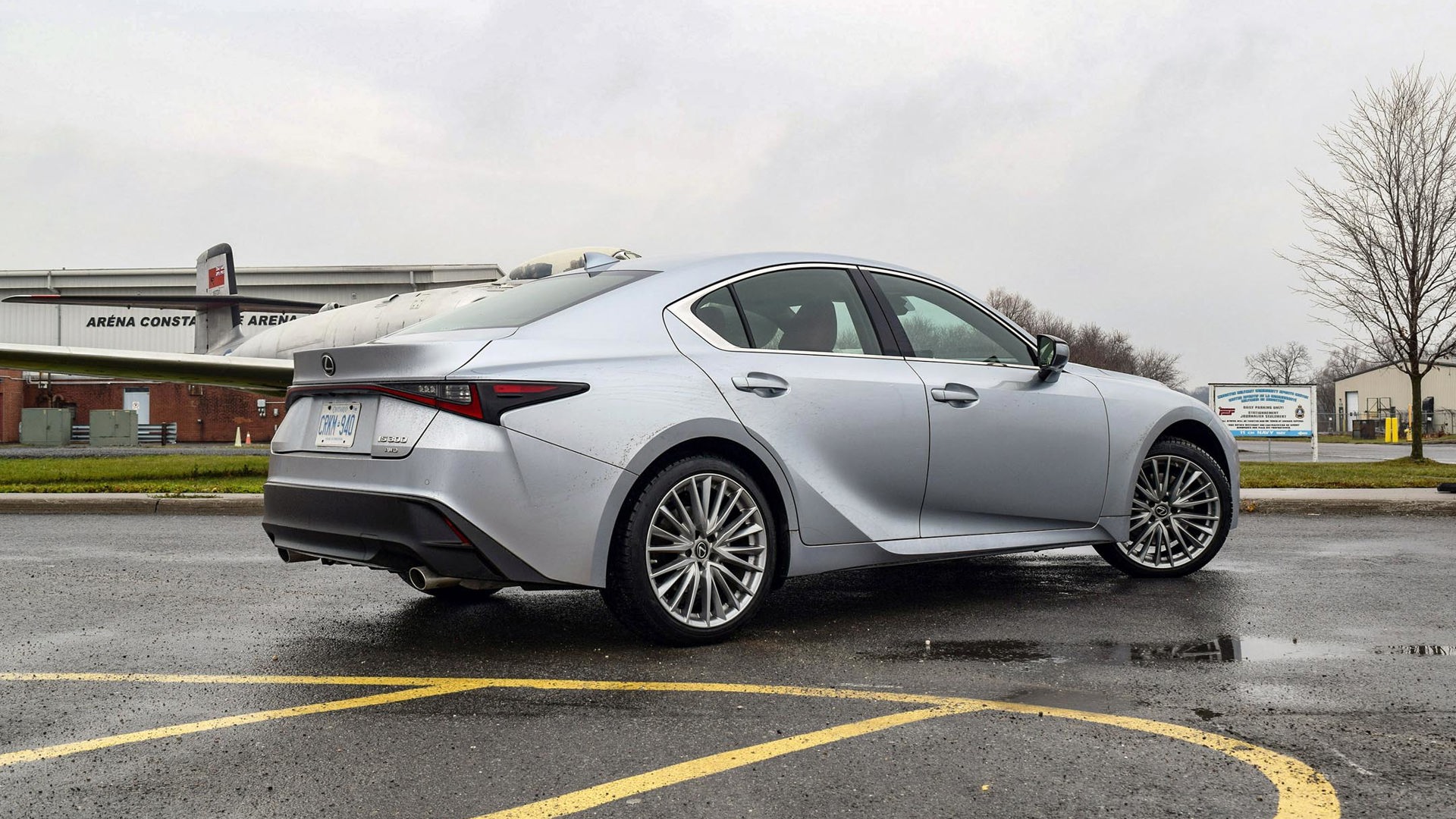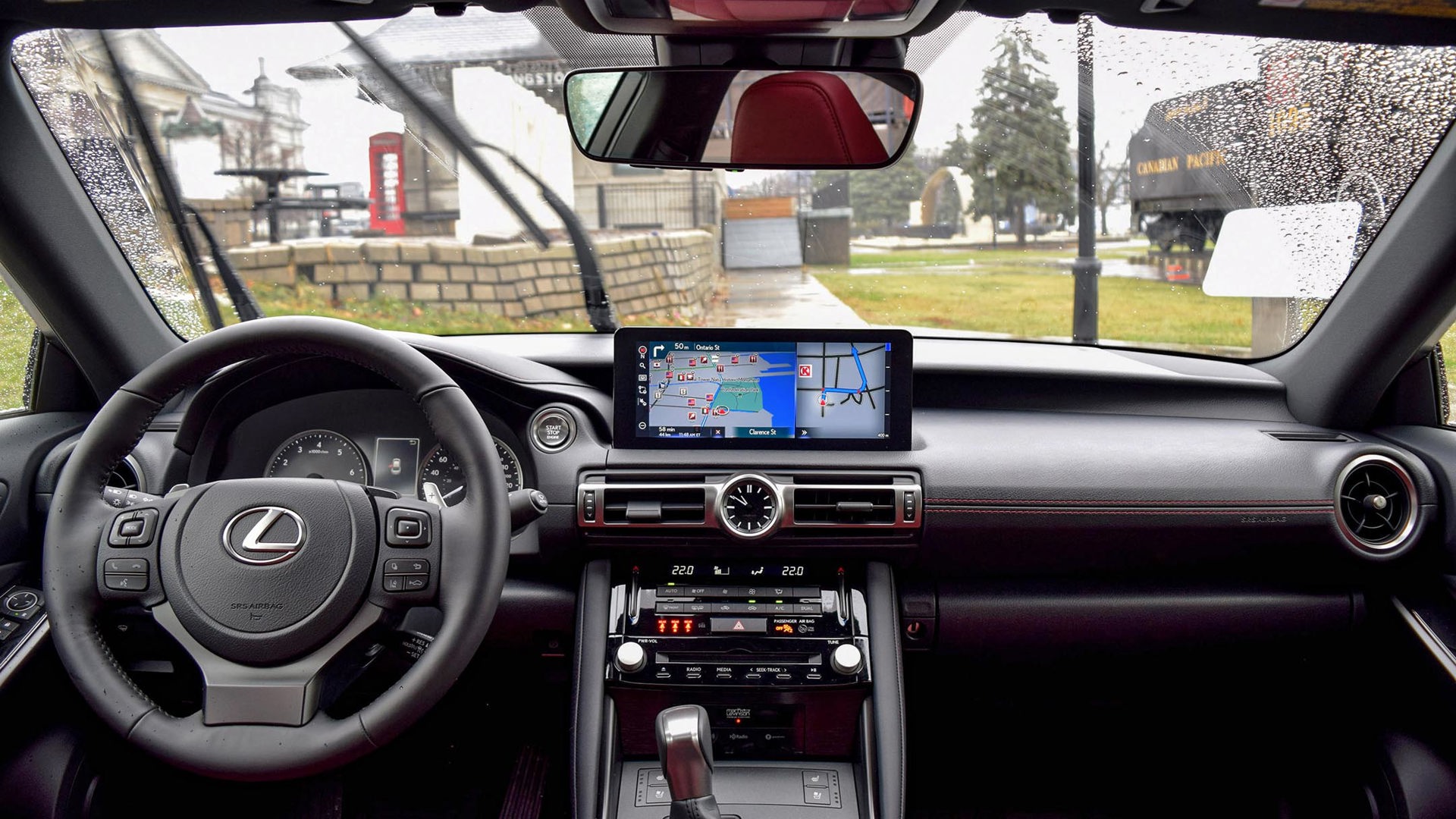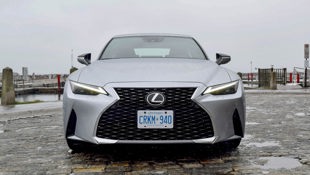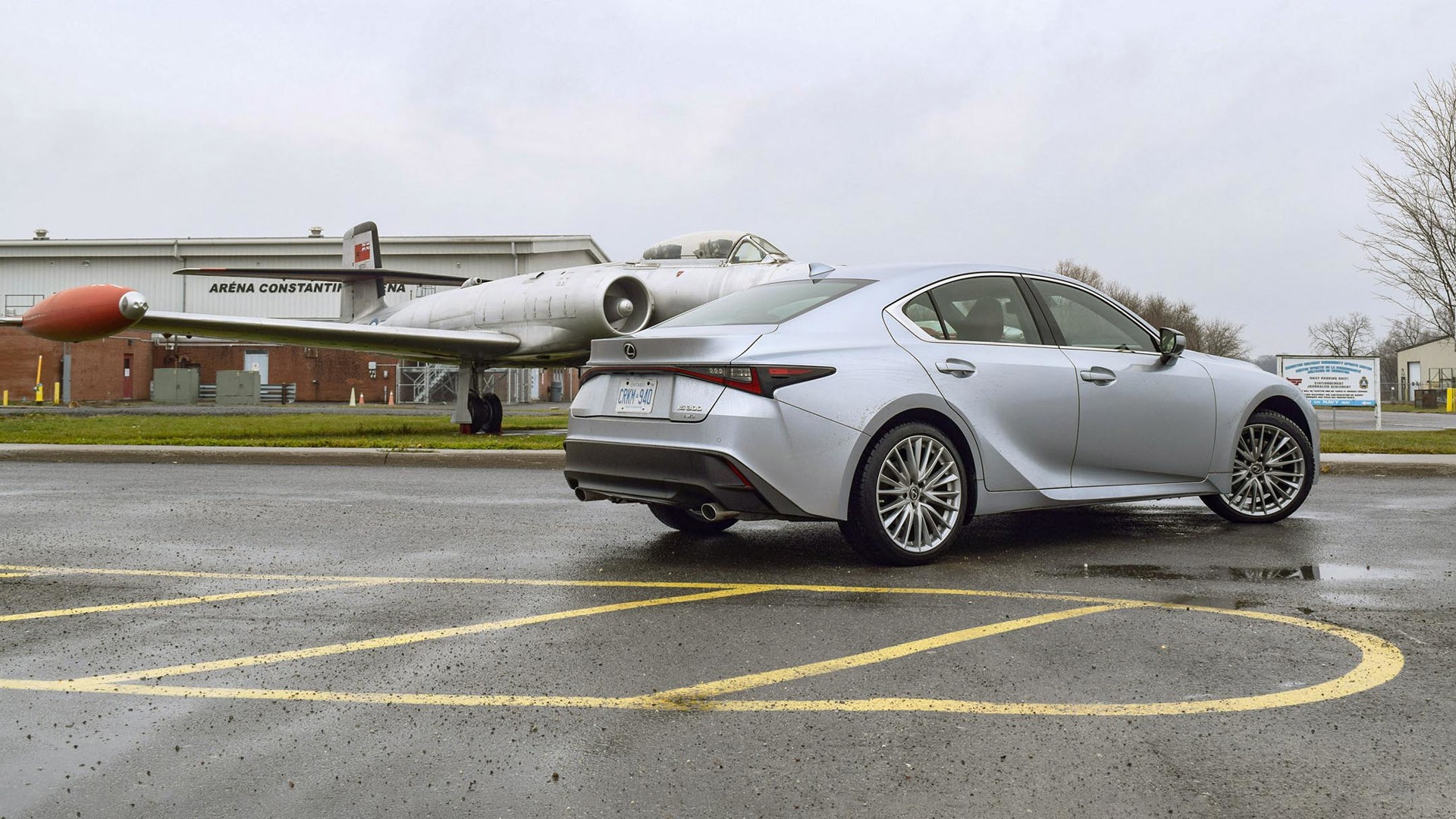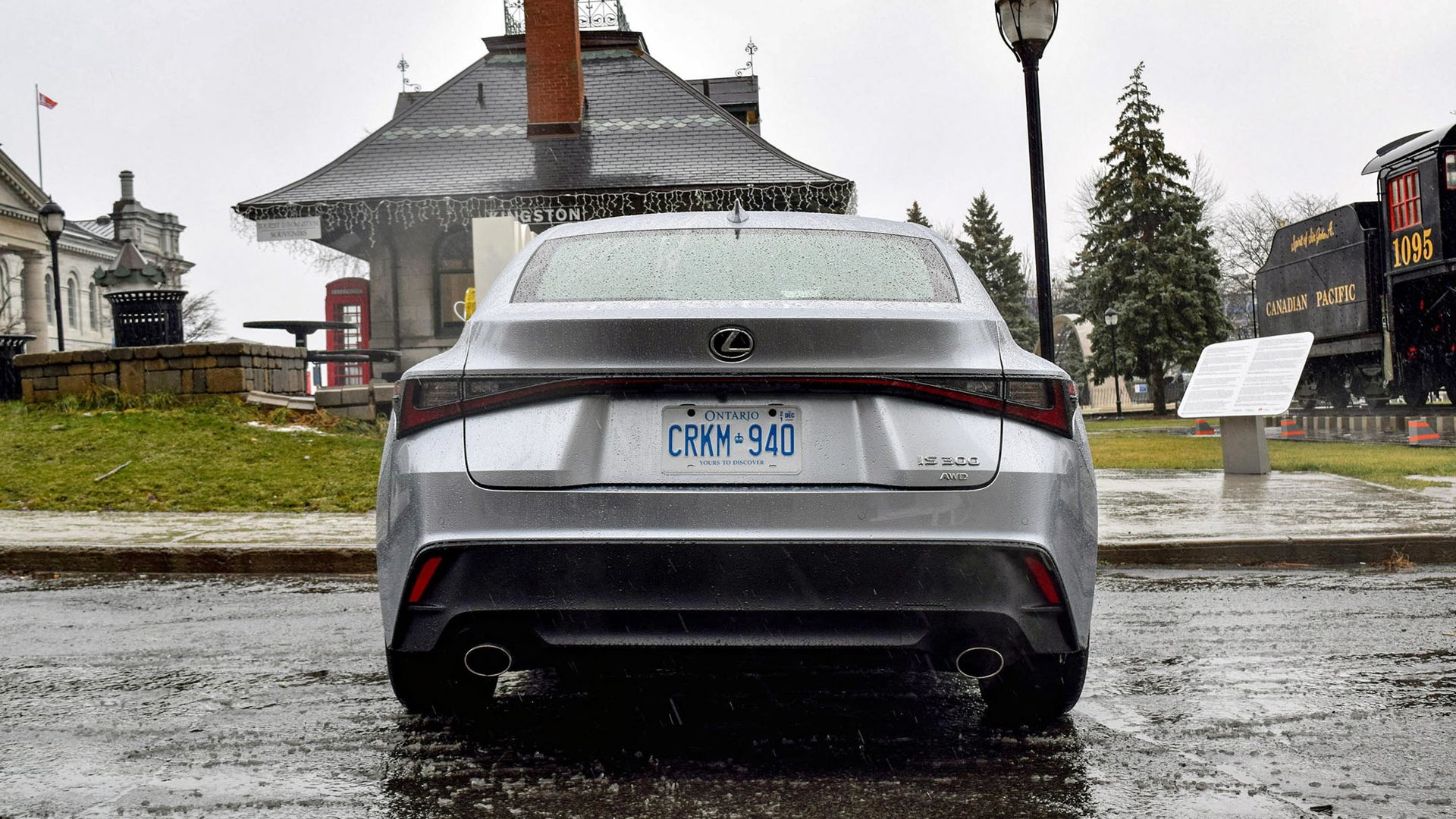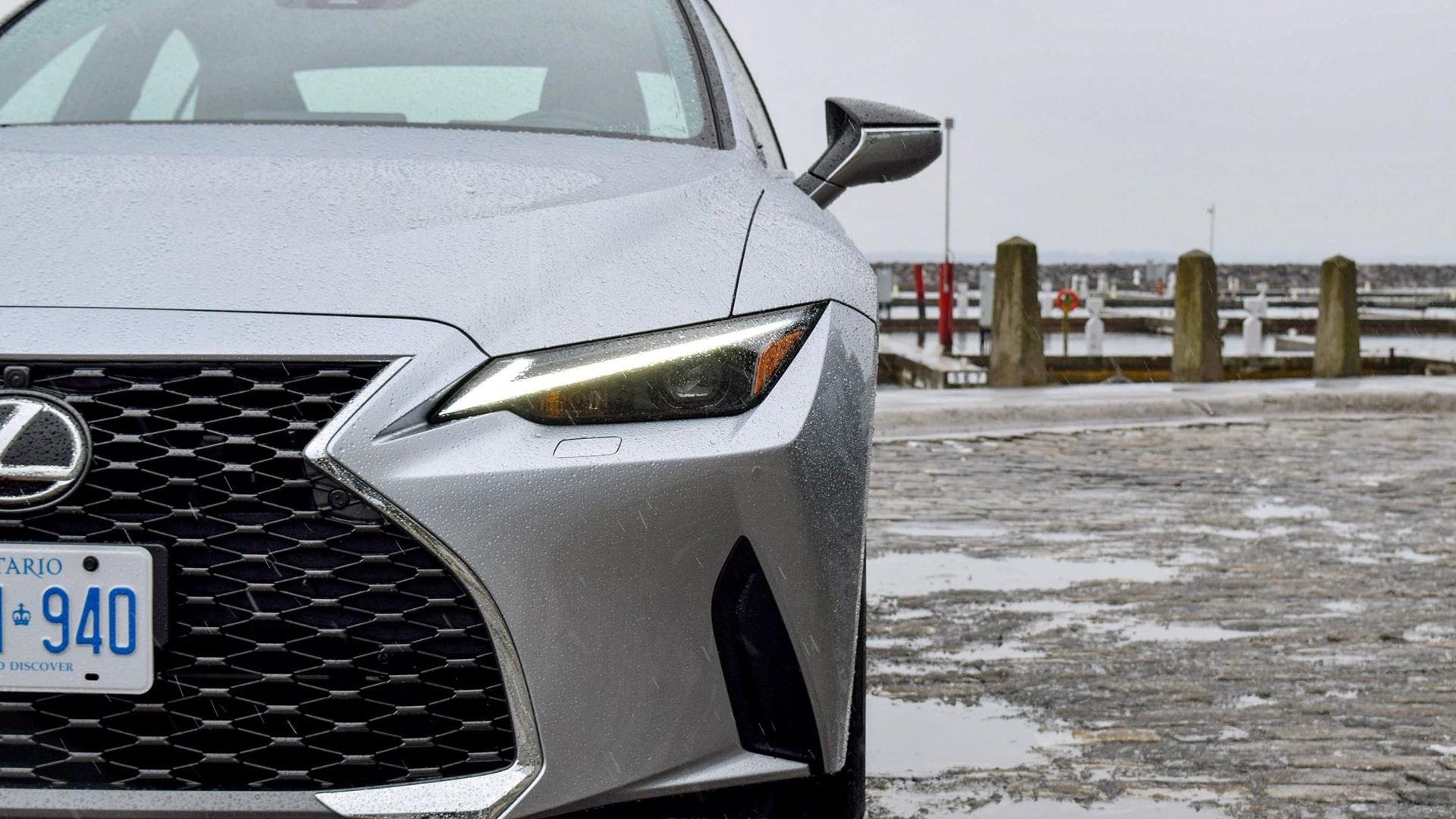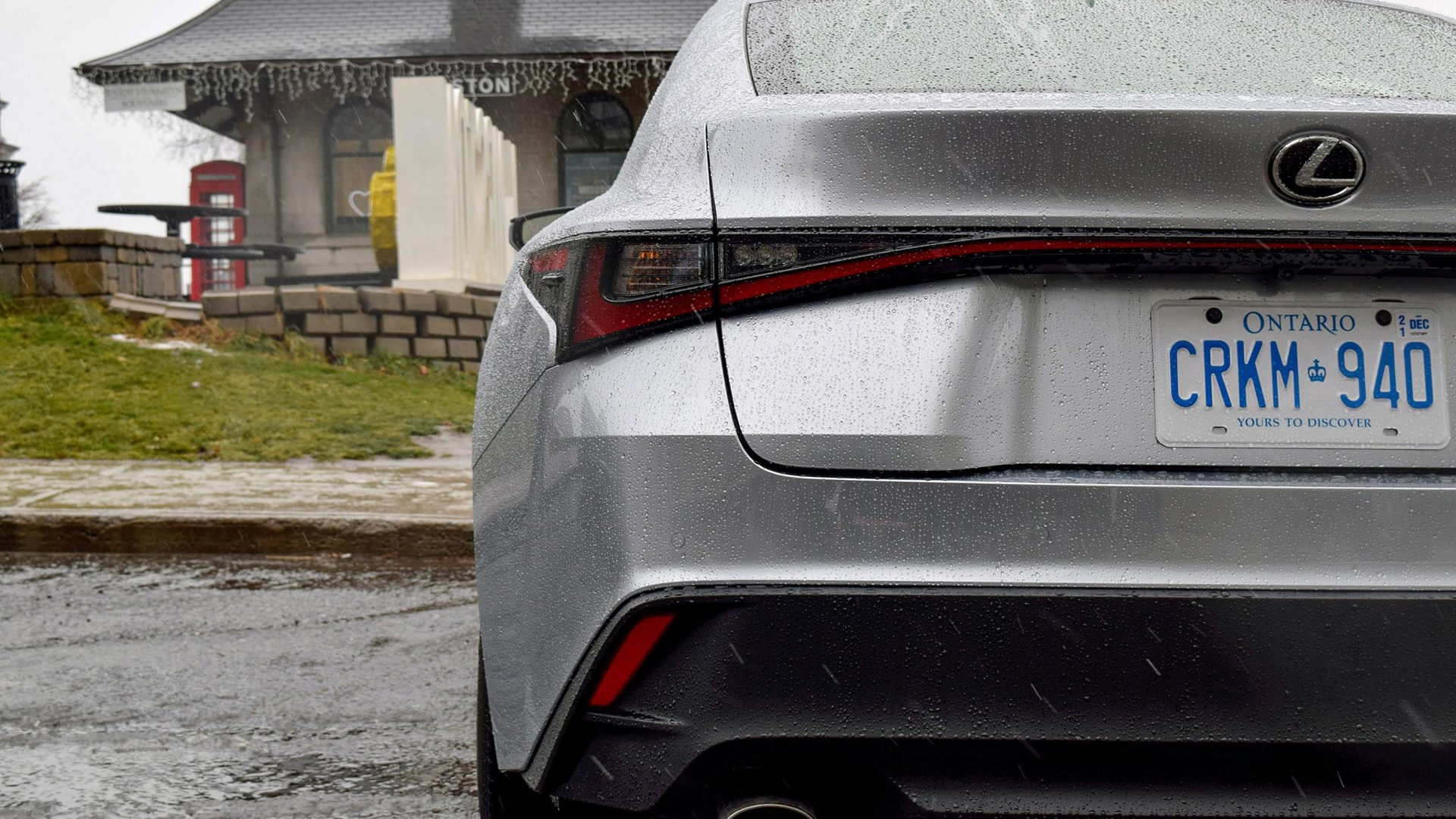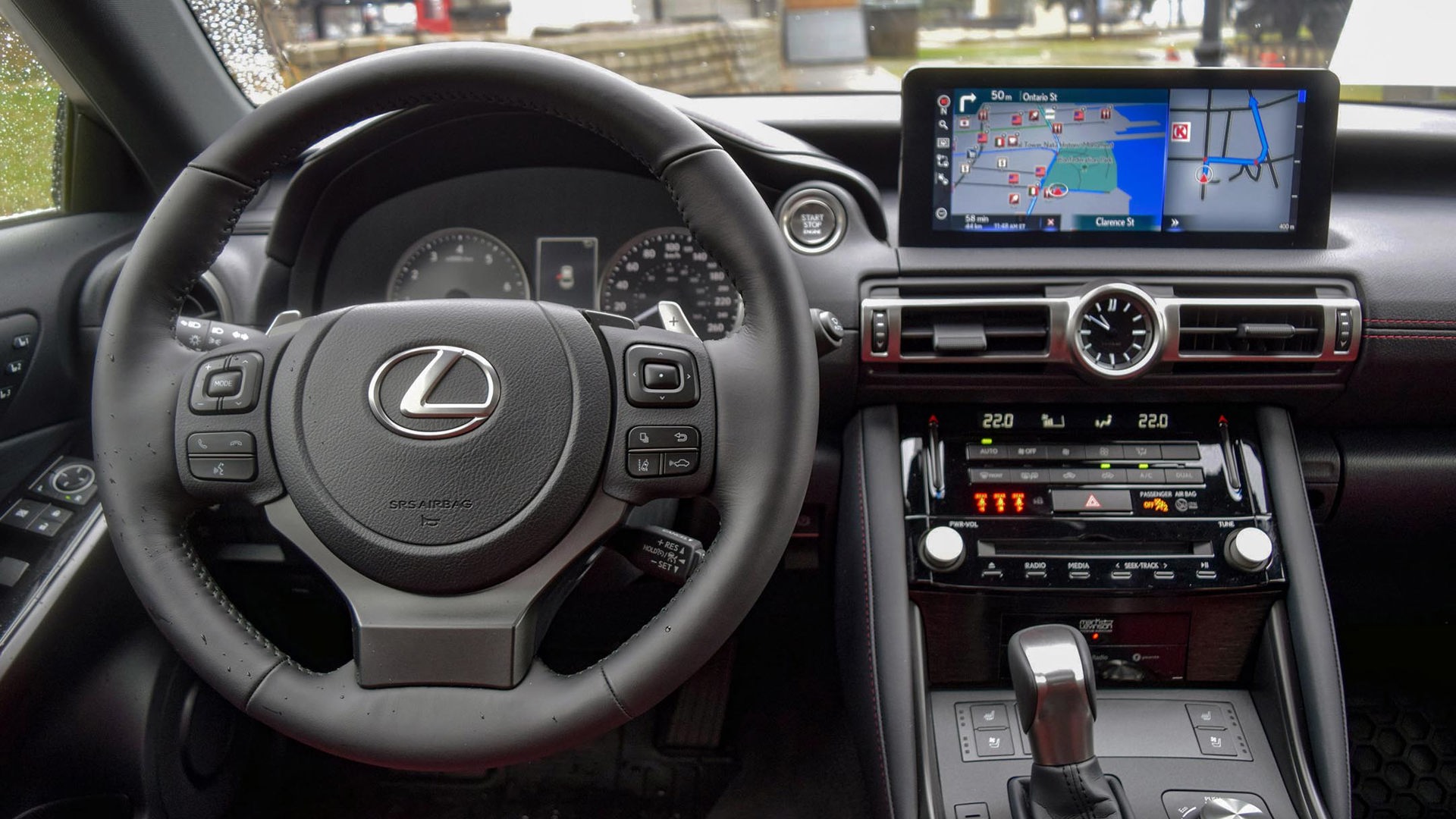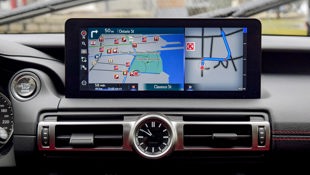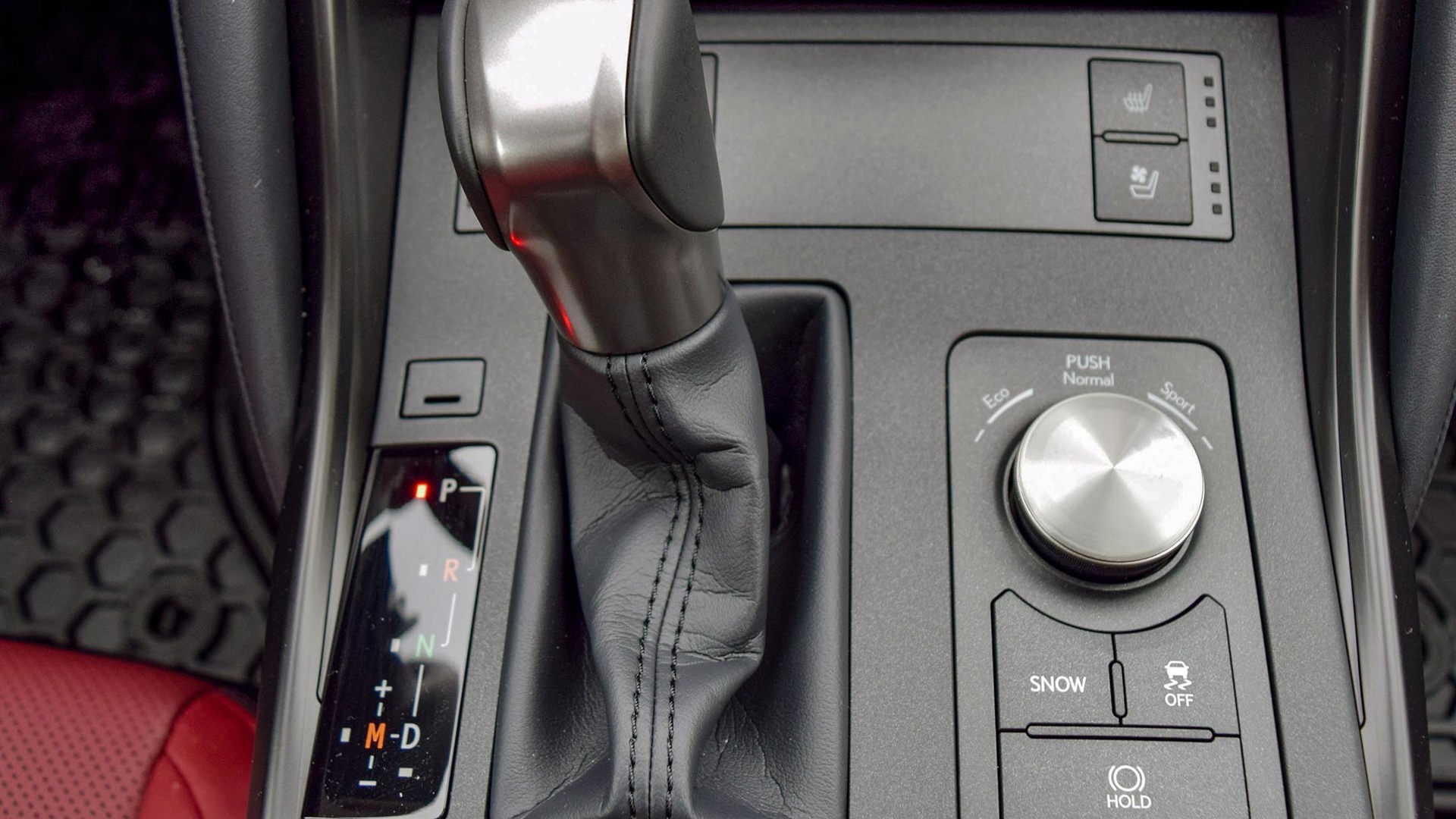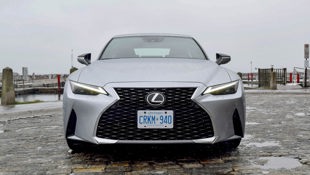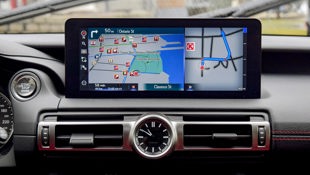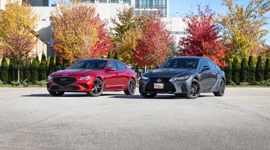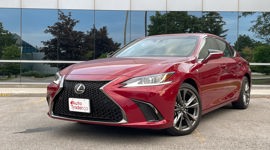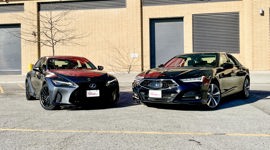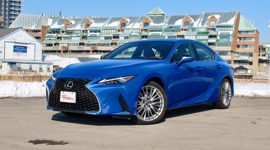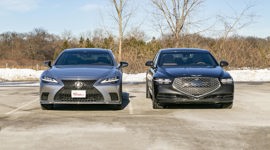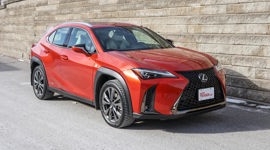Despite using most of the same running gear as its predecessor, the 2021 Lexus IS is not considered a refresh by the brand but rather an all-new product. Lexus also promises it’s a sharper product that’s more impressive and better than before.
To test this, I raised my finger and jabbed the 10.3-inch infotainment screen perched atop the dashboard. To my surprise, the interface responded! While Lexus still features a touchpad on the centre console, this screen is also touch-operated, resolving one of the most critical issues that’s made Lexus models tough to recommend.
While the rest of the IS received far fewer upgrades, the automaker has homed in on what made its vehicle appealing in the first place: styling, refinement, and the feeling of something robust.
A Familiar Face
Visually, you can see the connection from this model to the last. The vehicle is longer than before and also sports larger fender flares, allowing it to fit wider wheels and look more aggressive – as if the large spindle grille wasn’t intimidating enough. Lexus pairs that change with slimmer lights and a thin bar that unites the two taillights. The IS even offers lightweight, matte-black BBS wheels for extra visual flair.
The interior feels like more of the same. I looked forward to some of the wow factor found in halo Lexus products like the LC grand tourer or LS luxury sedan, but the IS sees no such trickle-down love. Still, the cabin features high-quality switchgear and smartly disguised plastic panels. All the harsher materials are hidden away from the driver and out of reach. Like the exterior, the dashboard design is full of angles, which takes some getting used to.
Upgraded Tech, but Maybe Not Enough
Along with the new touchscreens – an eight-inch unit is standard, while higher trims get a 10.3-inch display – F-Sport models get the nifty moving gauge inspired by the LFA supercar (which is now ten years old and succeeded in some ways by the also-stunning LC 500). However, buyers have no options for a head-up display or fully digital gauge cluster, two features that are becoming more common in this segment.
There are many controls and small buttons found throughout the dashboard, which can be a bit overwhelming at first; but fortunately, Lexus doesn’t hide any functions in the submenus of its infotainment system.
While the upgrade to the infotainment system is appreciated, the automaker didn’t stop there, offering Android Auto and Apple CarPlay support, too. There’s no wireless capability, and you won’t find a wireless phone charger here either, though. Instead, Lexus upgraded the optional and impressive sound system. It now features 17 speakers, providing a combined output of 1,800 watts. Those who loved this car’s stereo before will enjoy it even more this time around.
Two of Everything
Lexus hasn’t changed anything under the hood, and the nomenclature is still a bit confusing. See, the base model with rear-wheel drive is called the IS 300, but it uses a 2.0L turbocharged four-cylinder engine. This motor features 241 hp and 258 lb-ft of torque and is paired to an eight-speed automatic transmission. If you opt for the IS 300 AWD, the entire drivetrain is swapped for a 3.5L naturally aspirated V6 with an output of 260 hp and 236 lb-ft of torque (yes, that’s less torque than the turbo-four). This engine is mated to a tried and true six-speed automatic – it’s got fewer gears than transmission found in the turbo car, too – and a rear-biased all-wheel-drive system. The top trim, called the IS 350 AWD, uses the same 3.5L engine as the IS 300 AWD, but in this application it makes 311 hp and 280 lb-ft of torque.
While the latest products from Lexus boast 10-speed transmissions, twin-turbo motors, or hybrid powertrains, the IS gets nothing special. It almost feels like it doesn’t belong in the same family as the ES and LS, let alone the LC.
The motors Lexus uses in the IS are fine, but none of them are exhilarating or efficient. The 2.0L is rated to return 9.5 L/100 km in combined driving conditions, while the V6s return 10.8 L/100 km. The bright side here is that the V6 is smooth and offers a good soundtrack, although that tone is enhanced through the vehicle’s speakers.
Mechanical Fine-Tuning
Other changes under the hood include new motor mounts designed to keep the vehicle feeling smooth while cornering. Changes to the welding and stamping process also help to keep the vehicle stiff and responsive.
There’s an adaptive variable suspension system available on one of the F-Sport packages for the IS 350 AWD, furthering the sporty appeal of the vehicle. Weight seems decently managed, with rear-wheel-drive models tipping the scale at around 1,680 kg (3,704 lb), while V6 models stay below 1,770 kg (3,902 lb), making them lighter than comparable BMWs.
On the road, the sedan feels good but nothing more. Lexus has a whole new test track in Japan that’s inspired by the treacherous Nürburgring in Germany, and it’s using it to develop its new cars. The aim is to bring more engaging products to market. Perhaps there is more to come, but for now, the IS feels all-too-similar to the last model, which was solid, but not class-leading or pulse-raising in terms of performance.
However, I was driving on snowy, barely plowed roads, and my testers featured winter tires, which also impacted their performance characteristics. Fortunately, this allowed me to test the confidence of these vehicles in poor conditions. The all-wheel drive typically sends 70 per cent of the power to the rear wheels, leaving a reasonable 30 per cent for the front wheels, which helps the vehicle feel well balanced and confident through the snow. When needed, this split can even out to 50/50, but it seems like no more than 50 per cent of the power will go to the front axle.
Safe and Confident
Confidence is a large part of the Lexus IS drive experience. It feels robust and well-weighted. The steering requires effort, far from the numb steering feel found throughout the industry. Even if it doesn’t feature the latest gizmos or the highest performance powertrain, the overall feeling is still one of quality, something that feels solid under your command.
The automaker imbues this feeling into its safety suite, awkwardly subbed “Lexus Safety System+ 2.5.” It includes adaptive cruise control, lane-keeping assistance with a lane-centering feature, automatic high-beam, and a forward collision system that can detect pedestrians and cyclists. There is also a left-turn intersection assistance feature, which will warn you about hard to see oncoming traffic. That’s a decent upgrade for the system, and it worked well on the plowed roads we drove on.
The Lexus IS left a bit of a sedate impression until I checked out the price. Starting at $42,950 for an IS 300 RWD, and topping out at $58,000 for a fully loaded IS 350 AWD F-Sport, the lineup seems to be a bit more affordable than the popular German offerings.
The Verdict
While the new Lexus IS seems like a refresh, the changes are just enough to let the sedan stay relevant. But with these limited changes, how long will the Lexus IS be relevant? It’s hard to see how the automaker will build on this model for a whole generation. It gets no new powertrains, a few upgraded technologies, and a style that’s more stopgap than a showstopper. Instead, Lexus has refined the details that made the IS appreciated in the first place, and that should continue to bring the same customers back into the showrooms.


